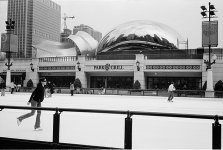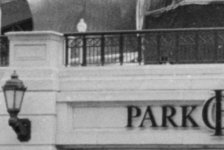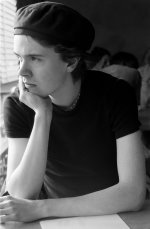I've been reading all of your posts, some of which are highly sophisticated and most informative, with a touch of sadness. I have used TriX, PlusX, and EFKE and Ilford black and white films most of my life. If developed properly - the right time and the right temperature - grain is not a problem, that is, as long as the negs are enlarged in a wet darkroom using a regular enlarger and either resin-coated or fiber-based papers. In fact you need grain to focuse the enlarger precisely (using a grain focuser).
It's when you leave the wet room and enter the digital room that creating decent images from film negatives becomes far more complex. Not a problem with images made with a DSLR, but very fiddly otherwise. I wouldn't mind paying out some bucks for a system (film neg scanner or flatbed) that I could rely upon to produce an 11/14 image as easily and as effortlessly as I can produce one in a darkroom using my old Simmons/Omega B22XL enlarger.
I wouldn't mind that one bit, as it's become somewhat of a chore mixing chemicals, setting up trays, fiddling with lights, opening and closing paper safes - and cleaning up after. But at least I know what I'm going to get (most of the time) as it's a process I can control. But, in the digital world, with its flatbed scanners, film scanners, ICE, Silverfast, Vuescan, photoshop 2.0, 6.0, to say nothing of cantakerous printers with a tendency toward ink nozzle's jamming randomly - I guess if I were a younger man and had grown up with this stuff it might be easier to master. In short, I find it immensely time-consuming and frustrating, as you've no doubt sensed by now.
As for sending B/W film off to some lab where what happens to it is beyond one's control, it's really quite simple to develop at home. All you need is a change bag, a stainless steel Nikkor tank or two, some reels, a darkroom thermometer, some sort of timer (used Graylabs are reasonable), D76, stop bath, fixer, a developing chart (can download one from Freestyle, or from their catalog), a small bottle of photoflo, a dust-free place to hang negs while they dry, and some negafiles.
And then, if you toss out ICE and reduce the DPI's during your scan, and you still get unacceptable graininess, then you'll know, at least, that it's not your negative's fault.
(sorry about carrying on so)
Ted




